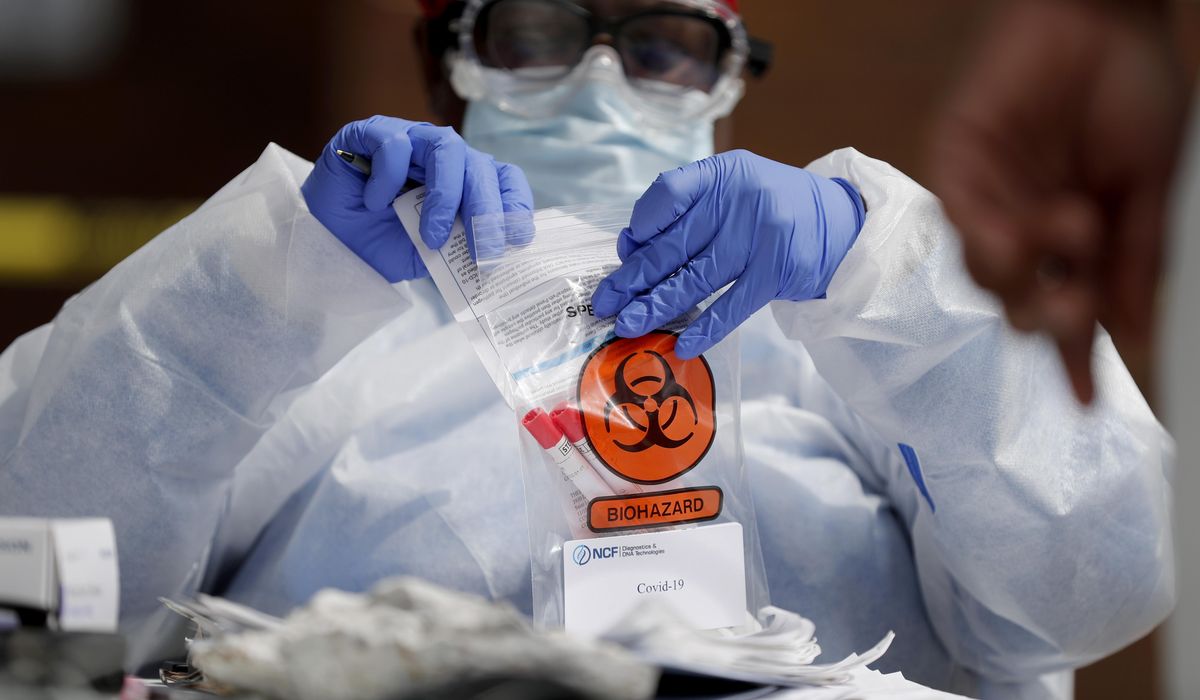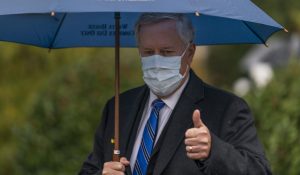Hospitals are filling with COVID-19 patients again as the novel coronavirus surges across the country, pushing health care systems in rural areas to the brink and forcing them to consider ways to avoid overcrowding.
The situation is not as dire as it was last spring, when a crush of patients forced state and federal governments to lock down wide swaths of the economy. But the trend line is worrying, with hospitalization rates up 40% since last month. Hospitalizations increased in 39 states over the past week and declined in only 11.
A hospital in Idaho said it is at 99% capacity because of a surge in COVID-19 cases, forcing it to seek overflow room in Seattle or in Portland, Oregon, if it comes to that.
Wisconsin has admitted the first patient to its field hospital as death rates spike and some ICUs reach 90% of capacity. Gov. Tony Evers, a Democrat, is begging people to stay home as much as possible to reduce transmission and alleviate capacity.
Cases are surging even before the deep fall and winter seasons, when respiratory diseases tend to thrive. Governors say they can always find more beds but staffing is a constant worry. Now that the disease is widespread, it will be harder to bring in personnel from other places.
“The outlook sucks. It really sucks,” said Michael Mina, an assistant professor of epidemiology at the Harvard T.H. Chan School of Public Health.
The silver lining is that doctors understand COVID-19 better now than they did in the spring and have new treatments at their disposal. The Food and Drug Administration has approved remdesivir as a treatment, and antibody “cocktails” in the drug pipeline appear to have helped President Trump overcome COVID-19.
However, “to live through the hospital stay means that you’re still going to the hospital,” said Dr. Mina. “If we have too many people land in the hospital, then the hospitals get overloaded. You can’t have a functioning society, in my opinion, if we don’t have the availability of hospital beds for people.”
If no space is available, an infected person might not get the chance to receive pioneering treatments, he said.
Upticks in hospitalizations naturally follow increases in caseloads. The U.S. recorded more than 85,000 cases Friday, the highest daily total since the pandemic began, and 75,000-plus counts continued into the weekend.
The nation is likely detecting more cases through better testing, though the rising number of hospital visits and percentage of people testing positive indicate that transmission is increasing.
Mr. Trump is highlighting treatments that shorten hospital stays as he campaigns for reelection and says the nation cannot afford more lockdowns. He points to his own experience with the disease this month.
“I had it. Here I am. Here I am in Wisconsin,” Mr. Trump told supporters in Waukesha, Wisconsin.
The president said he received tremendous care after contracting COVID-19 and wants emergency-use provisions to get others the antibody treatment he received.
It is unclear whether the therapy, which is still in clinical trials, will be widely available soon. Remdesivir, an antiviral medication that has proved to speed up recovery times, is being used across the country.
The coronavirus that causes COVID-19 was discovered in Wuhan, China, in December. The disease spread quickly around the world and has killed roughly 225,000 in the U.S. alone. More than 900 people in the U.S. died from COVID-19 on Saturday, according to figures updated Sunday.
Mr. Trump said people who want to stay home to protect themselves from infection should do so but others should be able to go out and live their lives instead of suffering from societal lockdowns.
Former Vice President Joseph R. Biden says a bigger, bolder plan is needed to avert disaster.
During the transition period between the election and the inauguration, Mr. Biden said, he would reach out to governors and local elected officials to try to persuade them to impose mask-wearing mandates. He would mandate mask-wearing in all federal buildings and all interstate transportation.
He set a goal of increasing the number of daily coronavirus tests to the same number of tests that are being conducted weekly right now, boosting production of supplies such as gowns and masks, and developing a detailed, nationwide plan for reopening.
“I’m not going to shut down the economy. I’m not going to shut down the country. I’m going to shut down the virus,” the Democratic nominee said Friday during a speech in Delaware.
Mr. Biden pointed Sunday to a new cluster of cases among aides to Vice President Mike Pence as a sign that the White House is incapable of mitigating the spread of the virus.
Dr. Mina said the pandemic is likely to get worse this winter because of the biology of the virus and because people spend more time indoors, where transmission is more likely.
“We’re seeing a spike that is likely to exceed what we saw in the summer,” Dr. Mina said. “None of this is surprising, I think, and that’s the frustrating part.”
He said the nation had a chance to start from a better place when transmission slowed in the summer.
“We didn’t do that at all,” he said, “and now we’re going to have to live with the consequences of that, or some people won’t live as a result.”
• David Sherfinski contributed to this report.



















